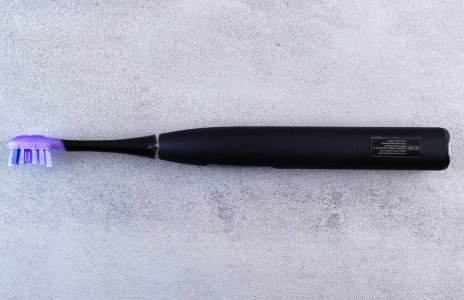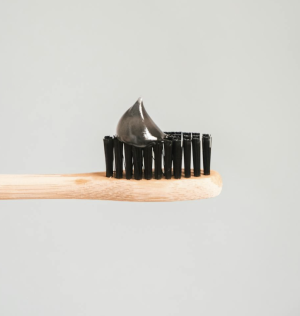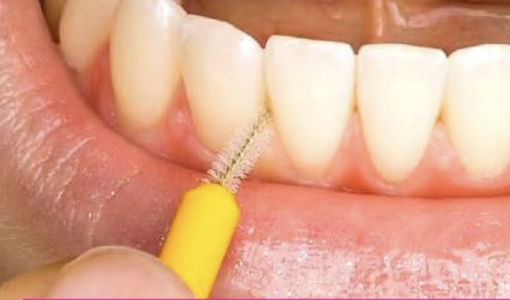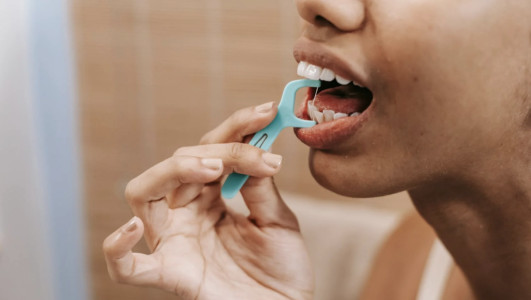The truth about toothpaste, timing, and tools—dentists break it down
By
Veronica E.
- Replies 0
Disclaimer: The information provided in this article is for educational purposes only and is not intended as a substitute for professional medical advice, diagnosis, or treatment. Always consult your physician or other qualified healthcare providers with any questions you may have regarding a medical condition or before making any changes to your health regimen.
If you’ve been brushing your teeth for decades, it might feel like second nature.
But dental experts say most people are making small mistakes that can lead to big problems—especially as we age.
From brushing too quickly to skipping the spots that matter most, your routine might not be as effective as you think.
And that can impact more than just your smile—it may even affect your heart, brain, and overall health.
The good news? A few easy tweaks can help you protect your teeth, gums, and well-being.

Dagmar Else Slot and Fridus van der Weijden, a Dutch dental duo with over 100 research papers under their belt, have spent more than 15 years studying how to clean teeth effectively.
They’ve partnered with top US professionals like Lancette VanGuilder (American Dental Hygienists’ Association) and Dr. Mia Geisinger (American Academy of Periodontology) to share science-backed advice anyone can follow.
Their message is clear: good brushing habits can save your health—and your wallet.
According to the CDC, 40% of adults over 30 have gum disease, and 90% have had cavities.
That adds up to nearly $46 billion in lost productivity and hundreds of dollars per person in dental expenses each year.
But it’s not just about fillings and cleanings.
Gum disease has been linked to over 50 chronic health conditions, including heart disease, diabetes, liver issues, and even premature birth.
That’s why taking care of your mouth is one of the most important things you can do for your whole body.
Let’s break down the biggest dental slip-ups—plus simple ways to improve your routine:
1. Using the wrong toothbrush
Manual brushes work—but only if you have perfect technique.
Experts recommend an electric toothbrush with a built-in timer for the best clean.
Choose one with soft bristles, which are gentle on gums but still effective.
2. Brushing too quickly (or too long)
Two minutes is the magic number. Many people stop at 45–60 seconds, missing plaque in the process.
A timer—or an electric brush that alerts you—can help you hit the mark every time.

3. Using too much toothpaste
You only need a pea-sized amount.
Using more can create excess foam that masks issues like bleeding gums and may give you a false sense of cleanliness.
4. Neglecting your back teeth
Those molars matter! If your brush feels too big, try a child-size brush head for better reach.
Tip: relaxing your jaw slightly helps you angle the brush more comfortably.

5. Skipping interdental cleaning
Flossing is tricky for many adults.
Dental pros now recommend interdental brushes (rubber or nylon) as an easier and more effective alternative.
Use them before brushing to clear out debris.
6. Relying too much on mouthwash
Mouthwash is a nice final step, but it can’t replace brushing and cleaning between teeth.
And if you have a dry mouth, avoid mouthwashes with alcohol—they can make it worse!

7. Avoiding fluoride
Fluoride helps protect enamel and prevent cavities.
Despite online trends, dental experts agree: fluoride toothpaste is essential—and safe.
If your area is removing fluoride from drinking water, talk to your dentist about alternatives.
8. Not tailoring your tools to your needs
There’s no one-size-fits-all approach. Use whatever brush or floss you’re most likely to use consistently.
Technique and consistency matter more than expensive gadgets.

Here’s what the pros recommend:
Dental problems can quickly go from annoying to serious.
In 2017, over 2 million Americans visited the emergency room for dental emergencies.
Pain, infection, and expensive procedures are often the result of preventable issues.
But here’s the good news: with a few minutes each day and the right tools, you can dramatically reduce your risk—not just for toothaches, but for chronic health conditions too.
Read next: What your tooth color may reveal about your health

Have you recently changed your brushing routine or found a dental tool that works better for you? Share your tips and questions below—we’re all learning together, one smile at a time.
If you’ve been brushing your teeth for decades, it might feel like second nature.
But dental experts say most people are making small mistakes that can lead to big problems—especially as we age.
From brushing too quickly to skipping the spots that matter most, your routine might not be as effective as you think.
And that can impact more than just your smile—it may even affect your heart, brain, and overall health.
The good news? A few easy tweaks can help you protect your teeth, gums, and well-being.

The right technique, tools, and timing can make a world of difference in your oral health. Image Source: Pexels / Andrea Piacquadio.
Meet the experts behind the advice
Dagmar Else Slot and Fridus van der Weijden, a Dutch dental duo with over 100 research papers under their belt, have spent more than 15 years studying how to clean teeth effectively.
They’ve partnered with top US professionals like Lancette VanGuilder (American Dental Hygienists’ Association) and Dr. Mia Geisinger (American Academy of Periodontology) to share science-backed advice anyone can follow.
Their message is clear: good brushing habits can save your health—and your wallet.
Also read: Could dentists one day help you regrow your own teeth?
Why your oral health matters more than ever
According to the CDC, 40% of adults over 30 have gum disease, and 90% have had cavities.
That adds up to nearly $46 billion in lost productivity and hundreds of dollars per person in dental expenses each year.
But it’s not just about fillings and cleanings.
Gum disease has been linked to over 50 chronic health conditions, including heart disease, diabetes, liver issues, and even premature birth.
That’s why taking care of your mouth is one of the most important things you can do for your whole body.
Also read: Is nighttime teeth grinding secretly harming you? Here’s how to tell—and what to do about it
Common brushing mistakes and how to fix them
Let’s break down the biggest dental slip-ups—plus simple ways to improve your routine:
1. Using the wrong toothbrush
Manual brushes work—but only if you have perfect technique.
Experts recommend an electric toothbrush with a built-in timer for the best clean.
Choose one with soft bristles, which are gentle on gums but still effective.
2. Brushing too quickly (or too long)
Two minutes is the magic number. Many people stop at 45–60 seconds, missing plaque in the process.
A timer—or an electric brush that alerts you—can help you hit the mark every time.

A good electric toothbrush can take the guesswork out of brushing—just let it guide the way. Image Source: Pexels / Andrey Matveev.
Also read: Think your morning routine is healthy? One mistake could be ruining your teeth
3. Using too much toothpaste
You only need a pea-sized amount.
Using more can create excess foam that masks issues like bleeding gums and may give you a false sense of cleanliness.
4. Neglecting your back teeth
Those molars matter! If your brush feels too big, try a child-size brush head for better reach.
Tip: relaxing your jaw slightly helps you angle the brush more comfortably.

A pea-sized amount of toothpaste is all you need—more foam doesn’t mean a better clean. Image Source: Pexels / hello aesthe.
Also read: Are you destroying your teeth every day? Dentist reveals 5 common brushing mistakes that could be doing more harm than good
5. Skipping interdental cleaning
Flossing is tricky for many adults.
Dental pros now recommend interdental brushes (rubber or nylon) as an easier and more effective alternative.
Use them before brushing to clear out debris.
6. Relying too much on mouthwash
Mouthwash is a nice final step, but it can’t replace brushing and cleaning between teeth.
And if you have a dry mouth, avoid mouthwashes with alcohol—they can make it worse!

Interdental brushes make it easier to clean between teeth—especially for those who struggle with floss. Image Source: YouTube / Smart Invisalign & Braces With Dr Sarah Sadek.
Also read: Are you wrecking your teeth every day? The right way to brush for a healthier smile!
7. Avoiding fluoride
Fluoride helps protect enamel and prevent cavities.
Despite online trends, dental experts agree: fluoride toothpaste is essential—and safe.
If your area is removing fluoride from drinking water, talk to your dentist about alternatives.
8. Not tailoring your tools to your needs
There’s no one-size-fits-all approach. Use whatever brush or floss you’re most likely to use consistently.
Technique and consistency matter more than expensive gadgets.

The best dental tool is the one you’ll actually use—consistency matters more than brand or style. Image Source: Pexels / Sora Shimazaki.
Also read: A surprising new ingredient could change the future of dental care
A simple step-by-step brushing guide
Here’s what the pros recommend:
- Start with interdental brushes or floss to clean between your teeth.
- Brush for two full minutes using an electric toothbrush and fluoride toothpaste. Focus on all surfaces—front, back, and chewing sides.
- Don’t skip the back teeth—use a smaller brush head if needed and adjust your jaw position for better access.
- Spit, don’t rinse—some experts say skipping a rinse helps fluoride continue working.
- Check your gums regularly—bleeding may indicate inflammation or early gum disease.
Also read: Ditch the sugar? See which unexpected foods could be harming your teeth
The cost of neglecting your teeth
Dental problems can quickly go from annoying to serious.
In 2017, over 2 million Americans visited the emergency room for dental emergencies.
Pain, infection, and expensive procedures are often the result of preventable issues.
But here’s the good news: with a few minutes each day and the right tools, you can dramatically reduce your risk—not just for toothaches, but for chronic health conditions too.
Read next: What your tooth color may reveal about your health
Key Takeaways
- Many older adults make small but common mistakes while brushing, such as using too much toothpaste or rushing through the routine.
- Experts recommend using an electric toothbrush for two minutes with a soft brush head and only a pea-sized amount of fluoride toothpaste.
- Cleaning between teeth before brushing is key—interdental brushes are often more effective than floss, especially for gum health.
- Mouthwash can support oral care, but it should never replace brushing or interdental cleaning, and those with dry mouth should avoid alcohol-based formulas.
Have you recently changed your brushing routine or found a dental tool that works better for you? Share your tips and questions below—we’re all learning together, one smile at a time.






